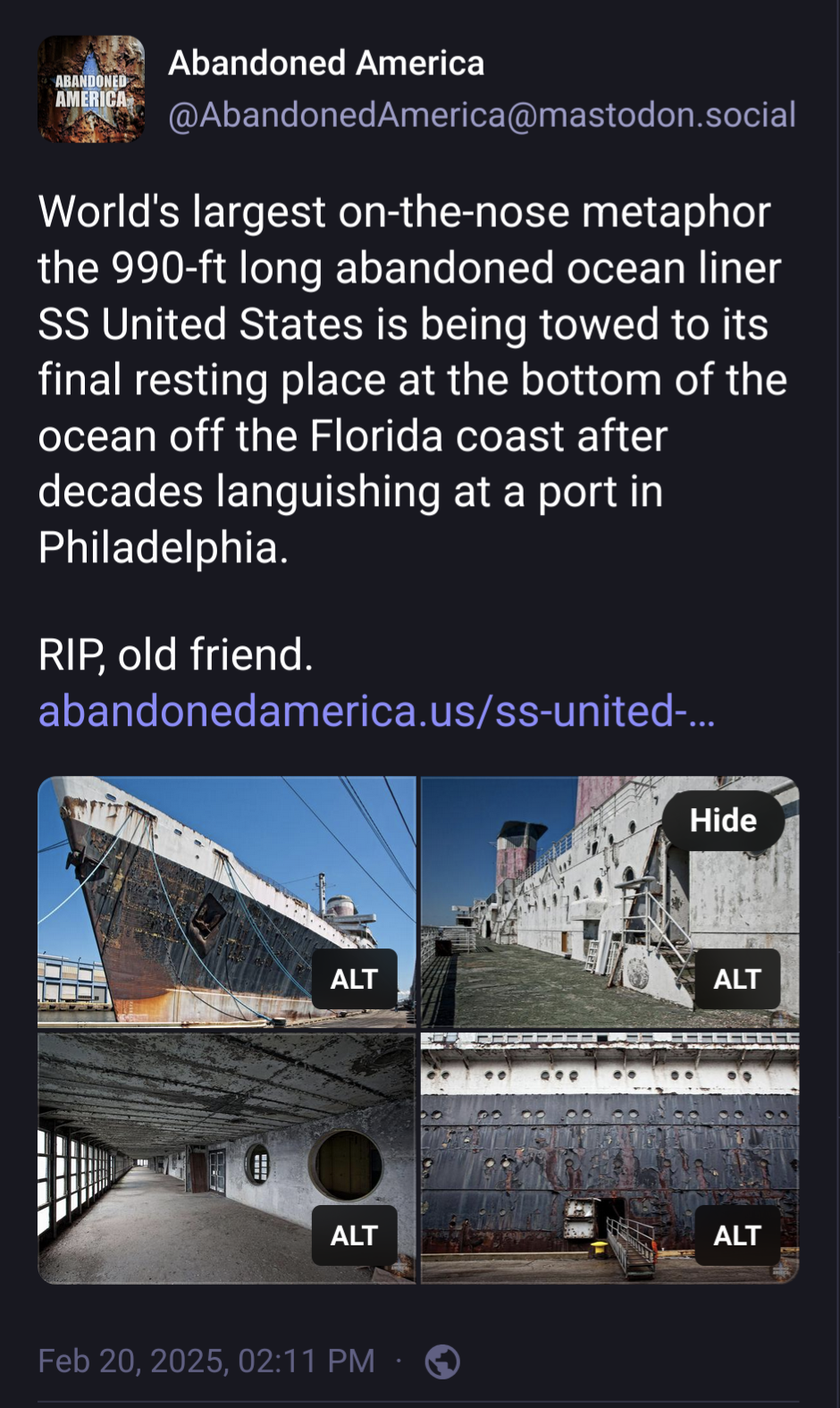this post was submitted on 21 Feb 2025
262 points (97.1% liked)
Microblog Memes
8514 readers
2782 users here now
A place to share screenshots of Microblog posts, whether from Mastodon, tumblr, ~~Twitter~~ X, KBin, Threads or elsewhere.
Created as an evolution of White People Twitter and other tweet-capture subreddits.
Rules:
- Please put at least one word relevant to the post in the post title.
- Be nice.
- No advertising, brand promotion or guerilla marketing.
- Posters are encouraged to link to the toot or tweet etc in the description of posts.
Related communities:
founded 2 years ago
MODERATORS
you are viewing a single comment's thread
view the rest of the comments
view the rest of the comments

They're usually sank in areas that are otherwise uninhabited by corals due to the depth of the water. The wrecks provide surfaces in the light zone which allows corals to grow.
It's entirely new habitat and it provides more breeding sites in the area. Even if it takes wildlife from other areas, the decrease in population in those results in higher breeding rates in those locations due to decreased competition for food and breeding sites. More breeding sites = more breeding and a higher overall population of wildlife over time.
Ecology aside, these sites draw a lot of tourism. They're "shipwrecks" that are in shallow water, often shallow enough that you can experience them while scuba diving, without needing decompression stops. This means that scuba divers can experience wreck diving without the extra complexity of decompression.
There are many of these artificial reefs around Florida and they're very popular dive sites in areas that otherwise would have no similar attractions.
Source: Dated a woman who worked at fish and wildlife, department of marine fisheries and attended the sinking of the Oriskany ( https://www.padi.com/dive-site/united-states-of-america-usa/uss-oriskany/#overview )